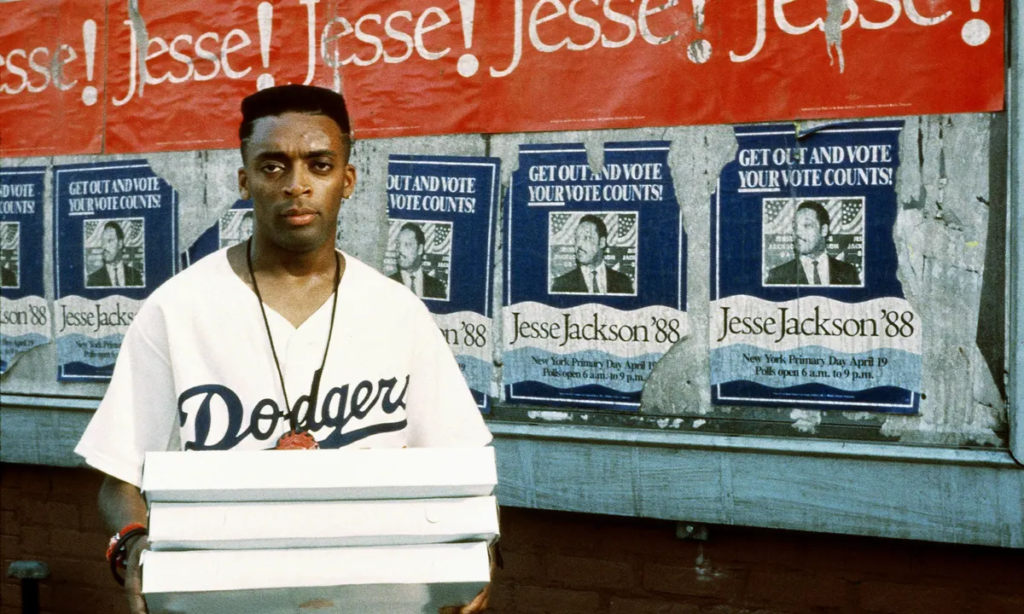Spike Lee’s “Do the Right Thing” isn’t just a typical movie; it’s a gripping portrayal of a Brooklyn neighborhood regarding racial tension. To me, the film felt like an exploration of stereotypes, power struggles, and societal complexities. Lee fearlessly employs stereotypes to critique and dissect them, using iconography to highlight conflicts between cultures and economic disparities deeply rooted in Marxist ideologies.
The scenes take on new depth when witnessed on screen. The clash between Radio Raheem and the Puerto Rican men isn’t just about music; it’s a battle for cultural dominance and economic power. After Radio Raheem’s tragic death, Mookie’s decisive step away from Sal and his sons marks a pivotal moment, signaling the eruption of frustrations and powerlessness within the neighborhood. And then there’s that pivotal moment after Radio Raheem’s tragic death. The tension grips you as Mookie, torn between loyalty and morality, takes that decisive step away from Sal and his sons. Valdez’s insights resonate as you witness the eruption of pent-up frustrations and powerlessness among the neighborhood residents, leading to a devastating climax.

Watching “Do the Right Thing” is an immersive experience that challenges viewers to confront uncomfortable truths about race, power, and societal neglect. Lee’s genius lies in his ability to make us reflect on our perceptions and biases. This film isn’t just about police brutality or racial identity; it’s a profound mirror reflecting the intricacies and conflicts that exist within our society, urging us to address systemic issues breeding conflict and despair.